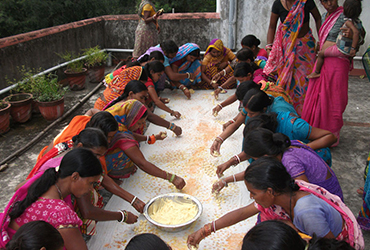In rural agricultural communities, women play a crucial role in preserving the cycle of cultivation by managing and maintaining traditional seed banks. These women, equipped with generational knowledge, carefully select, dry, and store seeds after each harvest to ensure that the next year’s crop is secure. This practice, rooted in sustainability, not only preserves biodiversity but also ensures food security for the community.
A remarkable example of this is the process women use to preserve green gram (moong dal) seeds. After harvesting, the women meticulously select the healthiest seeds, ensuring that only the best are reserved for the next planting season. These selected seeds are dried using traditional methods, often in the sun, to reduce moisture content and prevent spoilage. Once dried, the seeds are stored in earthen or metal containers, layered with natural preservatives like neem leaves to protect them from pests. This traditional seed storage method, passed down through generations, ensures that the seeds remain viable for the next planting season.
By maintaining a seed bank, these women not only protect their crops but also reduce dependence on external markets for seeds. This ensures that they can plant on time, using their stored seeds without facing the challenges of inflated seed prices or unavailability. The seed bank becomes a valuable resource, contributing to sustainable farming and community resilience, allowing these women to take control of their agricultural future.
Their efforts represent the essence of sustainable agriculture, ensuring that traditional knowledge continues to support future generations.


